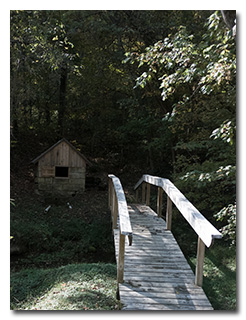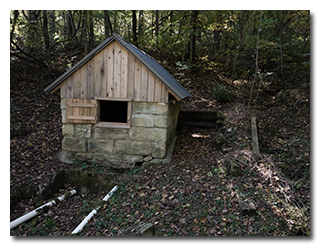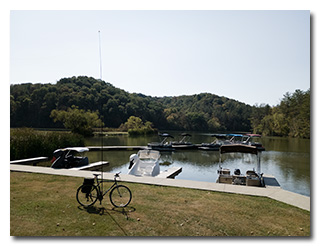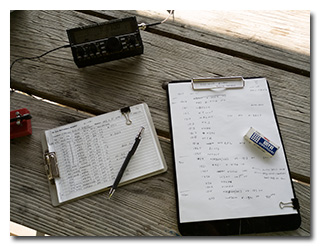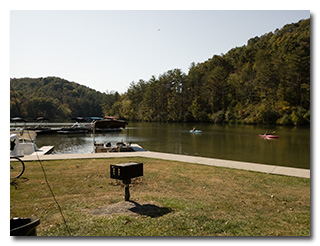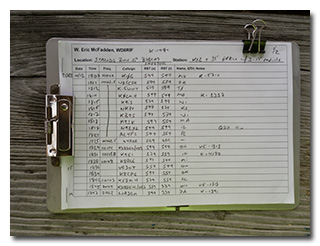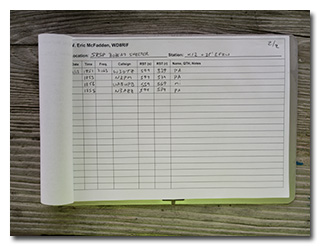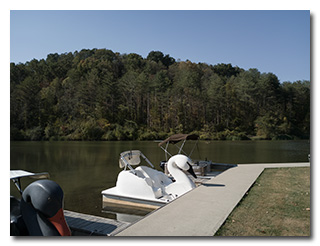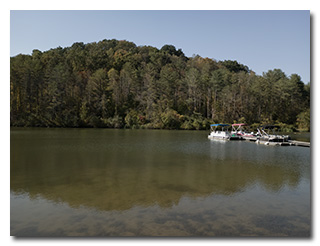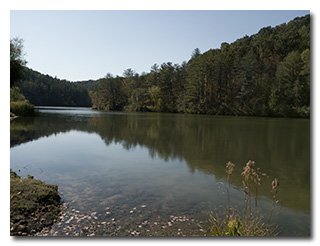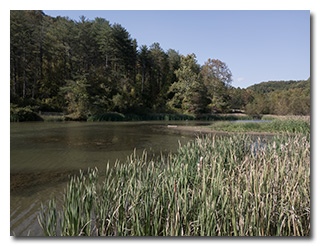
by William Eric McFadden
From the Strouds Run State Park website:
-
Strouds Run State Park is located in the scenic forested hills of Athens County, in the midst of the unglaciated Appalachian Plateau. Although untouched by the vast ice sheets that moved across portions of the state over 12,000 years ago, Strouds Run displays the effects of the glaciers -- in the deep ravines and high hills -- where the valleys served as outlets for torrents of glacial meltwaters. The erosive power of these waters carved the valleys and hillsides, creating the familiar topography Ohioans know today. Large deposits of glacial outwash, primarily sand and gravel, were deposited along these streams and strongly affected the type of biological communities present today.
Sandstone, the principal bedrock outcropping in the region, is very resistant to erosion and forms the uplands and steep sides of the valleys. Twisting roads and forest trails pass through these deep ravines and lead to dense stands of beech, hickory, oak, maple and tuliptree. Seasonal displays are offered by flowering dogwood, redbud and spring wildflowers -- with fall presenting a pageant of colorful foliage. These woods are home to white-tailed deer, fox, raccoon, opossum, squirrel, wild turkey and a variety of songbirds. Woodthrush, white-breasted nuthatch, scarlet tanager, pileated woodpecker and the rufous-sided towhee inhabit the forest canopy. These rugged hills and woodlands are truly reminiscent of the wilderness that characterized the Ohio country in the days of early settlers.
Pictures
- Linscott Springhouse: 1 | 2
- Eric's bicycle-supported mast and antenna
- Eric's KX2 station
- Eric's log: page 1 | page 2
- Kayakers come in on Dow Lake
- Dow Lake: 1 | 2 | 3
- Dow Lake and a distant Great Blue Heron
Description
On the afternoon of October 12, 2023, one member of the Southeast Ohio Radio Adventure Team took advantage of beautiful Fall weather to perform a successful bicycle-portable activation of Strouds Run State Park (K-1994) as part of the Parks on the Air (POTA; link) program.
Eric McFadden, WD8RIF, bicycled from his home to Bobcat Shelter within Strouds Run State Park with his small and lightweight KX2 Mini Travel Kit for the activation. Eric began his ride at 1640 UTC.
Before reaching Bobcat Shelter, Eric extended his ride to Linscott Springhouse (info) within the state park, hoping to be able to operate there but decided, instead, to operate near the swim-beach / boat-rental area. (Unfortunately, his Strava app failed to record the ride from his home to his operating location.)
Upon reaching the swim-beach / boat-rental area at 1750 UTC, Eric found Bobcat Shelter to be unoccupied. He set up his Elecraft KX2 transceiver on a shaded picnic table within the shelter, bungied his Goture Red Fox Super Hard 720 carbon-fiber mast vertically to his bicycle, sloped the Tufteln (link) 35' EFRW antenna from the KX2 up to top of the mast, and deployed three 17' counterpoise wires directly on the ground. Eric was on the air at 1805 UTC.
Eric had good cell-signal and would be able to spot himself on the POTA Spots website and to use POTA Spots to identify possible Park-to-Park (P2P) QSOs.
Eric began his operation by consulting POTA Spots for P2P QSO opportunities and at 1807 UTC, he made a P2P QSO on 20m with WI5D operating as K0G in the WWFF "Get Your Parks On, Earth Sciences Week" event at Platte Falls State Conservation Area (K-5710) in Missouri.
Staying on 20m, Eric found himself a clear frequency to run, began calling "CQ POTA", and was quickly auto-spotted to POTA Spots. His first QSO came at 1811 UTC with WD5CSK in Oklahoma. QSOs came quickly, with Eric's eighth QSO in this run coming at 1818 UTC with N9ZXL who was running 4w in Illinois. It took several minutes of calling CQ before the ninth QSO in the run came, at 1824 UTC, with AC4FS in Florida. Finally, at 1825 UTC Eric managed to complete an ESP-level QSO with N4REE in Florida. This run included a P2P QSO with K0CMH at Mastodon State Historic Site (K-3357) in Missouri and QSOs with operators located in Oklahoma, Texas, Missouri, Wisconsin (2), Kansas, Massachusetts, Illinois, and Florida (2).
Pausing to consult POTA Spots for P2P QSO opportunities, at 1829 UTC Eric made a P2P QSO on 30m with KD8DEU/VE3 at Bickford Oak Woods Conservation Reserve (VE-1313) in Ontario. This was followed at 1831 UTC by a P2P QSO on 30m with K9EI at Hardin Ridge on Monroe Lake State Recreation Area (K-4170) in Indiana.
Finding himself what he thought was a clear frequency on 30m to run, Eric began calling "CQ POTA" and was again quickly auto-spotted to POTA Spots. After several cycles of calling CQ, however, and before he succeeded in making any QSOs, Eric discovered that the frequency wasn't clear, that someone else could weakly be heard running the frequency. Eric changed frequency slightly, self-spotted himself to POTA Spots, and called "CQ POTA" once, and his first QSO in this run came at 1838 UTC with K8RLE in Michigan. QSOs initially came quickly on 30m, with his second QSO in this run coming at 1838 UTC with VE3OT in Ontario, and his third coming at 1839 UTC with K8CPG in Ohio. It took several more calls of "CQ POTA" before Eric made his fourth QSO in the run, at 1842 UTC, with KE8MH in South Carolina.
Pausing again to consult POTA Spots for P2P QSO opportunities, at 1845 UTC Eric made a P2P QSO on 40m with KD8DEU/VE3, who was still at Bickford Oak Woods Conservation Reserve (VE-1313) in Ontario, and at 1847 UTC he made a P2P QSO on 40m with WA3GM at Nockamixon State Park (K-1391) in Pennsylvania.
Finding himself a clear frequency on 40m to run, Eric worked four stations in quick order: W3OTZ in Pennsylvania at 1851 UTC, N3PM in Pennsylvania at 1853 UTC, WA8UPB in Michigan at 1856 UTC, and N3AZZ in Pennsylvania at 1858 UTC.
In all, Eric logged twenty-three QSOs, with six P2P QSOs, in fifty-two minutes of on-air time. All of Eric's QSOs were CW and were made at five watts output.
Eric took some photos, tore down his station, loaded his bicycle, and bicycled back home with a quick stop at his office.
Strava properly recorded Eric's ride home:
Eric also submitted his log to the World Wide Flora and Fauna in Amateur Radio (WWFF; link) program for an activation of Strouds Run State Park, KFF-1994.
(return)
